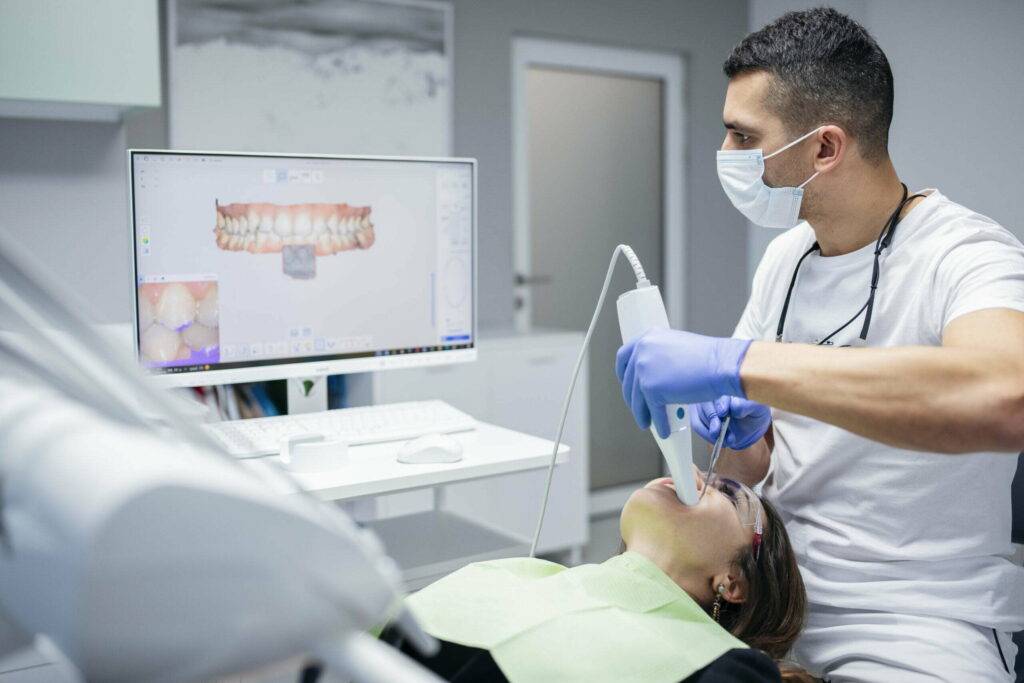Orthodontics, a field focused on correcting teeth and jaw alignment, has experienced remarkable technological advancements over the past few decades. One of the most groundbreaking innovations is 3D printing, which has transformed the development and execution of orthodontic treatment plans, offering unprecedented precision, customization, and efficiency.
The impact of 3D printing on orthodontics is a fascinating journey that highlights the intersection of science, technology, and healthcare.
3D printing, also known as additive manufacturing, involves creating three-dimensional objects layer by layer from digital models. In orthodontics, this technology is used to produce a wide range of dental appliances and models, including custom-made clear aligners, brackets and wires for traditional braces, retainers, and accurate dental models for treatment planning and patient education.
One of the most significant advantages of 3D printing in orthodontics is the precision and accuracy it offers. Traditional methods of creating dental appliances often involve manual processes, which can lead to inconsistencies and errors. In contrast, 3D printing uses digital scans to create highly accurate models of a patient’s teeth and jaw structure.
This precision ensures that orthodontic appliances fit perfectly, leading to more effective treatment outcomes. High-resolution intraoral scanners capture detailed images of the patient’s teeth, creating precise digital models, which are then used to design and print custom appliances tailored to the patient’s unique dental anatomy.
Every patient’s orthodontic needs are unique, and 3D printing allows for the customization and personalization of treatment plans. This technology enables orthodontists to create appliances that are specifically designed to address the individual needs of each patient.
Tailored treatment plans account for the specific movements and adjustments needed for each patient’s teeth, and custom-fit appliances are more comfortable for patients to wear, reducing the likelihood of irritation and discomfort.
3D printing significantly speeds up the process of creating orthodontic appliances. Traditional methods often involve lengthy production times and multiple appointments for adjustments. With 3D printing, the turnaround time for producing dental appliances is drastically reduced.
3D printers can produce dental models and appliances in a matter of hours, compared to days or weeks with traditional methods. If adjustments are needed, new appliances can be printed quickly, minimizing delays in treatment.
While the initial investment in 3D printing technology can be substantial, the long-term benefits often outweigh the costs. 3D printing can reduce the overall cost of orthodontic treatment by reducing labor costs, minimizing waste, and lowering production costs.
Automated printing processes reduce the need for manual labor in creating dental appliances, and the additive process means materials are used more efficiently, leading to less waste. The ability to quickly produce appliances in-house can also reduce reliance on external suppliers.
3D printing has paved the way for innovative treatment options that were previously not possible. Orthodontists can now explore new approaches to treatment that leverage the capabilities of 3D printing technology.
This includes the creation of intricate and complex appliances that can address challenging orthodontic cases more effectively and the use of 3D-printed surgical guides that provide precise templates for surgeons, improving accuracy and outcomes.
3D printing enhances patient engagement and education by providing tangible models that patients can see and touch. This helps patients better understand their treatment plans and what to expect.
3D-printed models serve as visual aids, allowing orthodontists to explain treatment steps and expected results more clearly. Patients can better visualize their treatment progress and the final outcome, leading to increased satisfaction and compliance.
The future of 3D printing in orthodontics is promising, with ongoing advancements and innovations continually improving the technology’s capabilities.
Future developments may include the possibility of printing biological materials for dental applications, such as tissue engineering and regeneration, the development of new materials that are more durable, biocompatible, and aesthetically pleasing, and the integration of 3D printing with artificial intelligence to create even more precise and personalized treatment plans.
In conclusion, 3D printing is revolutionizing orthodontic treatment plans by offering unprecedented precision, customization, efficiency, and cost-effectiveness.
This technology has transformed the way orthodontic appliances are produced, leading to better patient outcomes and enhanced treatment experiences.
As 3D printing continues to evolve, it will undoubtedly play an increasingly important role in the future of orthodontics, providing patients with innovative and effective solutions for achieving their ideal smiles.


